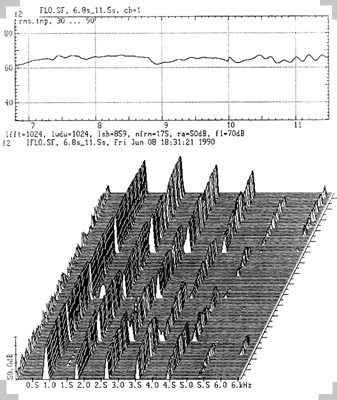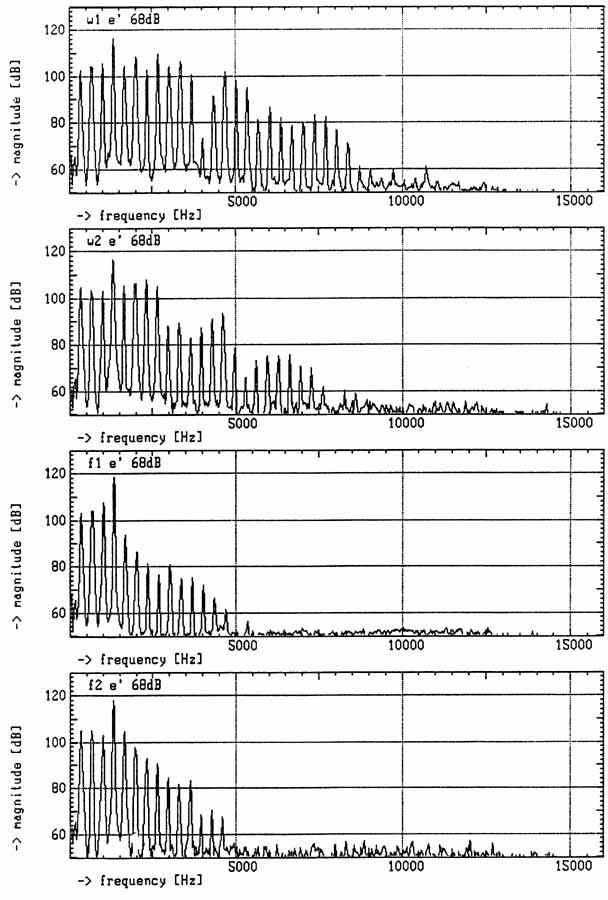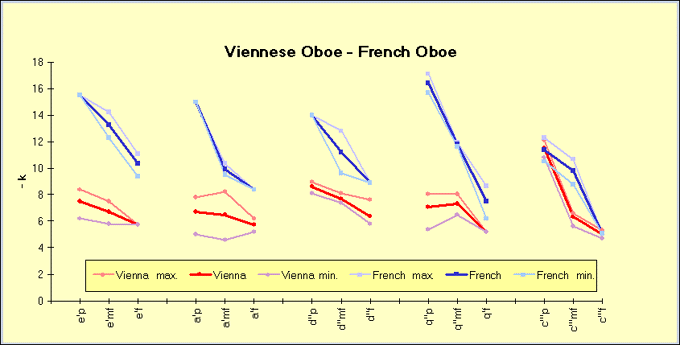Viennese Oboe
This type of instrument is used only in Vienna. A direct line leads from the Baroque and Classic (Mozart, Haydn) through some modifications (made in Germany 1850-1880) to the so called „Vienna Oboe“.
Historical annotation: Actually the „Vienna Oboe“ is a modified „German Oboe“! Richard Baumgärtel (oboe player of the Dresdner Hofkapelle) won 1880 the audition in Vienna and became principal oboist of the „Wiener Hofoper“. He used an instrument of Carl GOLDE (Dresden), which was enthusiastically recieved by all members of the Philharmonic orchestra. Since the maker of this instrument has died 1873 and left no successor, the Viennese instrument maker Josef HAJEK (1949-1926) worked out a copy of the Golde instrument (with some modifications in the shape of the bore) which had the same advantages of timbre the musicians in Vienna liked so much. That copy was the birth of the present Vienna Oboe. The modern instrument differs to this instrument only in the keywork, which of course became more complex and sophisticated during the years.
1. Vibrato
If one listens to Viennese and French oboes, one gets the impression, that the biggest difference is in the vibrato, which is used very seldom by the Viennese instrument and practically always by the others. But as the vibrato can be played on the Viennese instrument as well as on the others, it is specific to the style of playing and not to the instrument.
2. Change of register
If one asks oboists about the difference between the instrument types, one of the first answers will usually be, that on the Viennese oboe the change between the first and the second register takes place at b2, which is three semitones lower than on the French Instrument. This means e. g., that the solo at the beginning of the Florestan aria in Beethoven's Fidelio needs a register change on the Viennese instrument, while it is played in one register on the French instrument. This difference, however, cannot be seen in the partials (in the lower part of the next figure the sounds go from front to back, the register change is in the lower picture after the first sound). This is not surprising, because one cannot hear it (at least with good instrumentalists): this solo is not meant to show a register change but to show "the heaven opening ".


From this (and other) examples we conclude, that the register change does not contribute to the different sounds of Viennese and French oboe.
3. Timbre
Next we tried to localise the difference with the concept of formants; again we were not successful.
We could show, however, that the decrease of the partials following the biggest partial is significantly different for the two instrument types: the decrease is slower for the Viennese instruments. This can be seen in the following figure, which shows the spectrum of the partials of the sound e1 (mezzoforte) for four Viennese (w1, w2, w4, and w5) and two French (f1 and f2) oboes.
The decrease can be represented by the gradiant (k) of the regression, which is also shown in the pictures: As the slope for the French oboes is much steeper the absolute value for k (in the upper right corner) is about twice as high as for the Viennese instruments
The next figure shows the mean absolute values of k for five sounds in three degrees of loudness for Viennese and French oboes.
the mean absolute values of k for the Viennese (w) and the French (f) oboes together with the respective maximum and minimum values taken from a total of 90 sounds
From this Figure the following can be seen:
- The absolute values of k are nearly always higher for the French oboe - the slope of the curve is steeper.
- For the French instrument the absolute value of k is always decreasing from Piano to Forte which means that the slope of the curve becomes less steep.
- For the Viennese Oboe this slope is about the same from Piano to Forte - at least up to g''. This means that the sound colour does not change much, the sound becomes only louder.
Therefore the difference in timbre between the two instrument types gets smaller from Piano to Forte.



